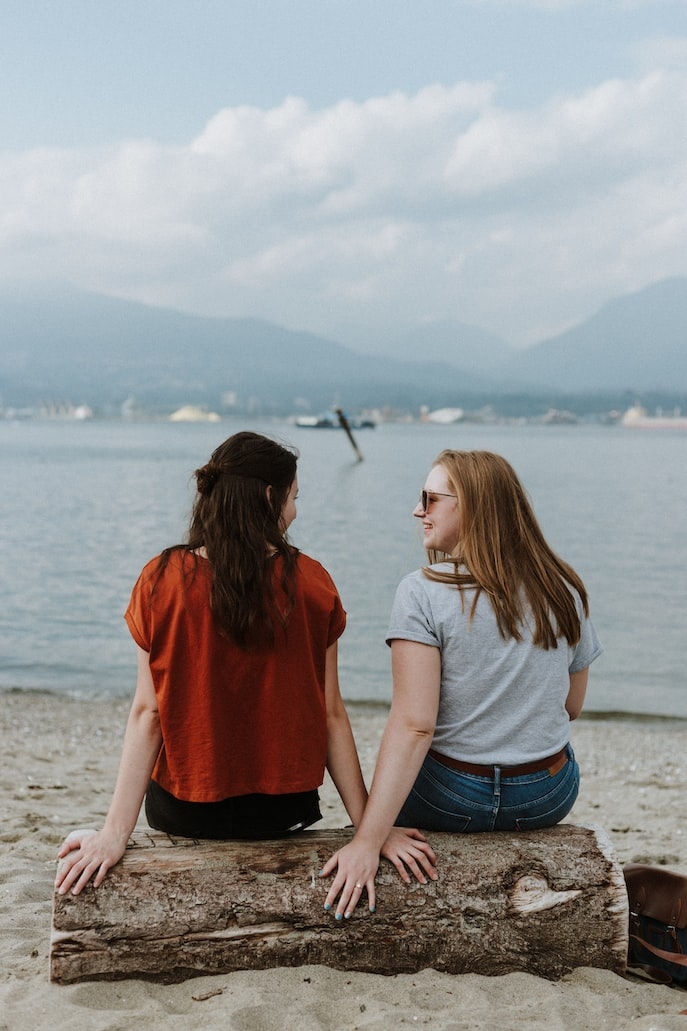Is it a cult, or a community?
- Brianna Leever

- Aug 10, 2022
- 4 min read
Updated: Mar 4, 2024
Years ago, I was sitting with Father Ganz, a Jesuit priest, who was explaining the different types of love to me. He said that there is a kind of love where you and another person both love a thing. Let me set the scene: You’re standing (or sitting) next to a person and you’re both looking at this thing you love; maybe it’s synchronized swimming, a women’s soccer match, or your skincare routine. You nerd out together. You spend a lot of time side by side talking about this thing and how much you love it.

Photo by Ryan Stefan on Unsplash
Then he shared about another type of love that happens when each person slowly turns from the thing they both love and towards each other. Your love for that person starts to go beyond the thing that originally bonded you.

Photo by Priscilla Du Preez on Unsplash
Father Ganz was perhaps trying to impart wisdom to help along my lackluster love life, but his message struck me on a more profound level with how we think about connection and community building.
Our common affinities are the first blooms of friendship. The ideas, activities, hobbies, and opinions that we have with others are the starting point for any connection.
I can’t help but think about a line repeated again and again from one of my favorite shows, “Love on the Spectrum.”
The dating coach asks: What are we looking for on the first date? The mentee/dater responds with militaristic precision, “Common interests!”
But common interests aren’t enough to get you on “Say Yes to the Dress.”
At some point, we must slowly, one degree at a time, turn away from the common thing we love and towards each other.
In community terms, this is when your cult becomes a community.
Typically, members join your space because they have a common purpose or set of values (usually embodied in the brand), an affinity for a thing (usually the product), or admiration for a person (usually the founder).
You introduce rituals, routines, and rewards to reinforce these commonalities. Which, if you think about it, isn’t too far off from the technical definition of a cult: a system of religious veneration and devotion directed toward a particular figure or object.
That’s not a bad thing (in fact, it is an excellent starting point), but our work as community builders is to help members slowly turn towards each other in connection and belonging.
So, how do we get members to turn toward each other?
Start by teaching them how to connect with each other. Here are some ideas to start doing this in your community today:
In your introduction instructions, invite them to comment on another person’s profile.
In your introduction questions, ask them to answer “What’s something you need help with from this community?” or “What’s a topic that you can help someone else with?”
In your event, have people share popcorn-style and pick the next person.
At the end of your event, ask: What’s a takeaway that you gained from this call from something someone else said? Who said it, and what is it?
Ask: Who is one person you can reach out to support in the community this week?
Ask: Who is one person you can reach out to for support in the community this week?
Ask: Who’s helped you this week from the community (either directly or indirectly), comment and tag them in the comments.
For collaborative events, make a rule that everyone has to have their camera on. Lurkers are fine, just not at this event.
I consistently get resistance on this.
I especially love it when I talk with someone who wants members to “organically” connect. (Read: I don’t want to have to teach or prompt anyone to do anything, I just want it to happen.)
Sadly, when someone says “organic” in the year 2022, what they are really trying to say is they want something to spontaneously combust.
Spontaneous combustion is the occurrence of fire without the application of an external heat source.
As a girl who grew up on a farm, I will be the first to man-splain to you that “organic” interaction requires more, not less effort to get the outcomes you are seeking.
It means, instead of taking cheap shots and seeking quick wins, you are committed to taking the high road and providing the thoughtful structure needed for a tree to bear the fruit it was created to make.
You go out, day after day, and guide the vine up the trellis so it can get the most light. You do the hard work of pruning the tree in the off-season. You install netting so that birds can’t destroy your crop. You put in a pond to get ducks that will eat the slugs. You care for the ecosystem.
So, what does your community ecosystem look like? How is your ecosystem supporting your members turning towards each other, not just reinforcing a common affinity?
How does each element and experience in your community circle back to one another, strengthening connections, and creating belonging?
Feel free to comment below with your insights.
Join the Fireside Monthly(ish) Newsletter from Ember
Join the Ember Community
The place for go-getter community entrepreneurs building community-powered businesses.




I clicked on this article because of the title... People have told me that I’m the type of person who would either join a cult or…. start a cult. I wasn't really sure if that was a compliment or an insult. Reading this shed some new light on it. Beautifully written and incredibly insightful.